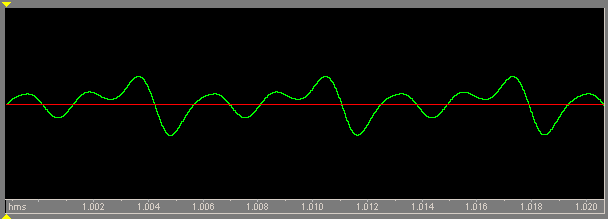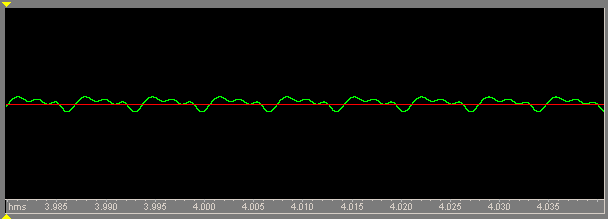

|
Pickup SignalsMeasuring Guitar Output
I've actually done this test before but I decided to repeat the tests and document the measurements for others to use. I set up a signal generator, an oscilloscope and a guitar next to my computer. I used a sine wave from the generator to calibrate the recording so that the levels of the guitar signal could be measured. A Les Paul guitar with moderately hot pickups was used and an open D string recorded into the soundcard. The 5 second signal is displayed below and clearly demonstrates the envelope of a plucked string. The numbers along the bottom frame of the graphic represent time after the pick attack with each division being one-tenth of a second.
What use can we find for this information? It is useful in designing a distortion device or calculating the amount of clean headroom needed for a flanger, echo or other processor. In the second article in this series, I will use the information to look at the distortion section of a TS-type distortion to see if the IC chip can possibly contribute any distortion artifacts beyond that from the clipping diodes. This will be helpful in determining how much of the distortion sound can be attributed to the selection of the opamp. Note: How I measured the sound level. The recorded wave actually has several seconds of a 1v pk-pk sine wave at the end that I have cropped out for display. I saved the wav file as raw data and then wrote a simple program that read the raw data and output the min/max level for each 0.1 second using the sine as a baseline for calibration (since I know that it starts at about 6 sec into the recording). I didn't tune the guitar before beginning but after counting the cycles I determined that it was less than 0.2 Hz off the proper D3 value.
|
AMZ-FX Home Page
Lab Notebook Main Page
Guitar Effects Blog
©2002 Jack Orman
All Rights Reserved



